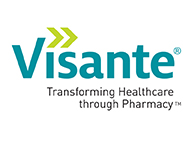SPONSORED CONTENT
Each year, Visante publishes its list of the top 10 issues facing hospital and health system pharmacy. In 2022, many challenges derive from the pandemic but also present opportunities for leaders to implement new solutions that will drive stronger performance in the future.
- The Pandemic
With a second pandemic winter to deal with, many of the country’s hospitals and other 340B providers need help. Overall, 80+% of hospitals are still struggling with being short-staffed and backlogged from the last wave of COVID-19 as well as challenged financially with increased expenses and decreased revenue. Health centers and other 340B providers have faced many of the same challenges and have played a crucial role in treating our most vulnerable patient populations during this unprecedented time. 340B covered entities are now looking at colder months with a potentially bad influenza season creating a possible “twindemic” situation. Hospitals and other 340B covered entities are looking at a possible “perfect storm” of high demand, high acuity, and low staffing for the beginning of 2022.
2. Factors Driving Workforce Challenges
To provide high quality and safe care, healthcare organizations have to be able to recruit and retain the necessary personnel but current market conditions are making it increasingly difficult to both attract and retain top talent. With escalating pressure to reduce costs, improve patient access, improve clinical outcomes, improve safety and meet expanding regulatory compliance requirements, safety net providers face unique challenges when it comes to workforce management and recruitment.
3. Specialty Pharmacy Tips for Expanding Services
Four actions health systems can take to expand specialty pharmacy services in 2022 include:
- Fill for employees
- Shift white-bagging to the internal pharmacy
- Increase capture rates and
- Advocate and educate about your unique and crucial role
4. Three Major Trends in Pharmacy Supply Chain
As we look to 2022, we expect to see continued and greater investment in Consolidated Service Centers (CSCs). Also, home infusion therapy will continue to grow as a site of care, and there will be an increased focus on cost savings. Drug shortages continue to plague organizations and put further strain on staff.
5. Increasing Symbiosis Between a Health System’s Pharmacy and its Employee PBM Plan
Health systems are in a unique position within the employee pharmacy benefit marketplace compared to most other employer groups. They have the power to maximize total plan savings simply by taking advantage of internal pharmacy resources that are not found within typical employee plans.
6. Are Cost Reduction and Other Financial Approaches to Lowering Drug Costs Being Utilized?
Strategies that not only impact the acquisition cost of the drug but also the reimbursement side of the equation, particularly in the outpatient setting, are a critical element of a successful pharmaceutical expense management strategy. These include critical analysis, design and implementation of Specialty Rx programs, Alternative Outpatient Infusion Sites of Care, Home Infusion programs and robust Revenue Cycle Management programs.
7. The 340B Program Battle with Manufacturers Continues in 2022
Our expectations for the 340B program for 2021 began with this statement: Without question, the greatest issue facing 340B Covered Entities (CEs) is the threat faced by the actions of several manufacturers who plan to restrict shipment of 340B purchased drugs to contract pharmacies.
Unfortunately, it appears this issue will dominate 340B challenges in 2022, and it will be every bit as busy with contract pharmacy issues, Part B reimbursement reductions, and increased state activity.
8. Compounding in 2022 Calls for Increased Focus on Standards
In early October 2021, the FDA released updated draft guidance for hospitals and health systems. Visante believes the language proposed is still vague and needs further clarification from FDA regarding the intent and at what point in time the “clock starts ticking.” Depending on the final interpretation, this language may have significant impact on IDNs with centralized service centers or those planning to centralize sterile compounding services.
9. Drug Diversion is Costing Hospitals
Drug diversion didn’t disappear when COVID-19 hit. Many changes associated with managing the COVID-19 pandemic in hospitals may in fact be creating new opportunities for drug diversion by increasing both access and opportunities for diversion. Consider that the U.S. Department of Justice is busy investigating violations of the Controlled Substance Act, and recently two large health systems negotiated significant financial penalties – one being $4.5 million for failure to “guard against the theft and diversion of controlled substances.”
10. Infusion Strategy
Developing and implementing a home infusion strategy for your health system is similar to the level of importance that starting a specialty pharmacy program was ten years ago. Payers are starting to mandate home infusion as a preferred site of care for specialty infusions and requiring that these services be paid separately from the traditional hospital contract. Pharmacy leaders who are proactive in establishing a comprehensive internal home infusion therapy program will be well-positioned for success in tomorrow’s marketplace, as this strategy improves patient care and convenience, and presents a new source of revenue for the organization.
For questions, please contact Kristin Fox-Smith at kfoxsmith@Visanteinc.com.

Jim Jorgenson is the President and CEO of Visante.



